Smoke from Canadian wildfires has made observing the night sky a challenge for many. Here are some ways you can make the best of a bad situation.
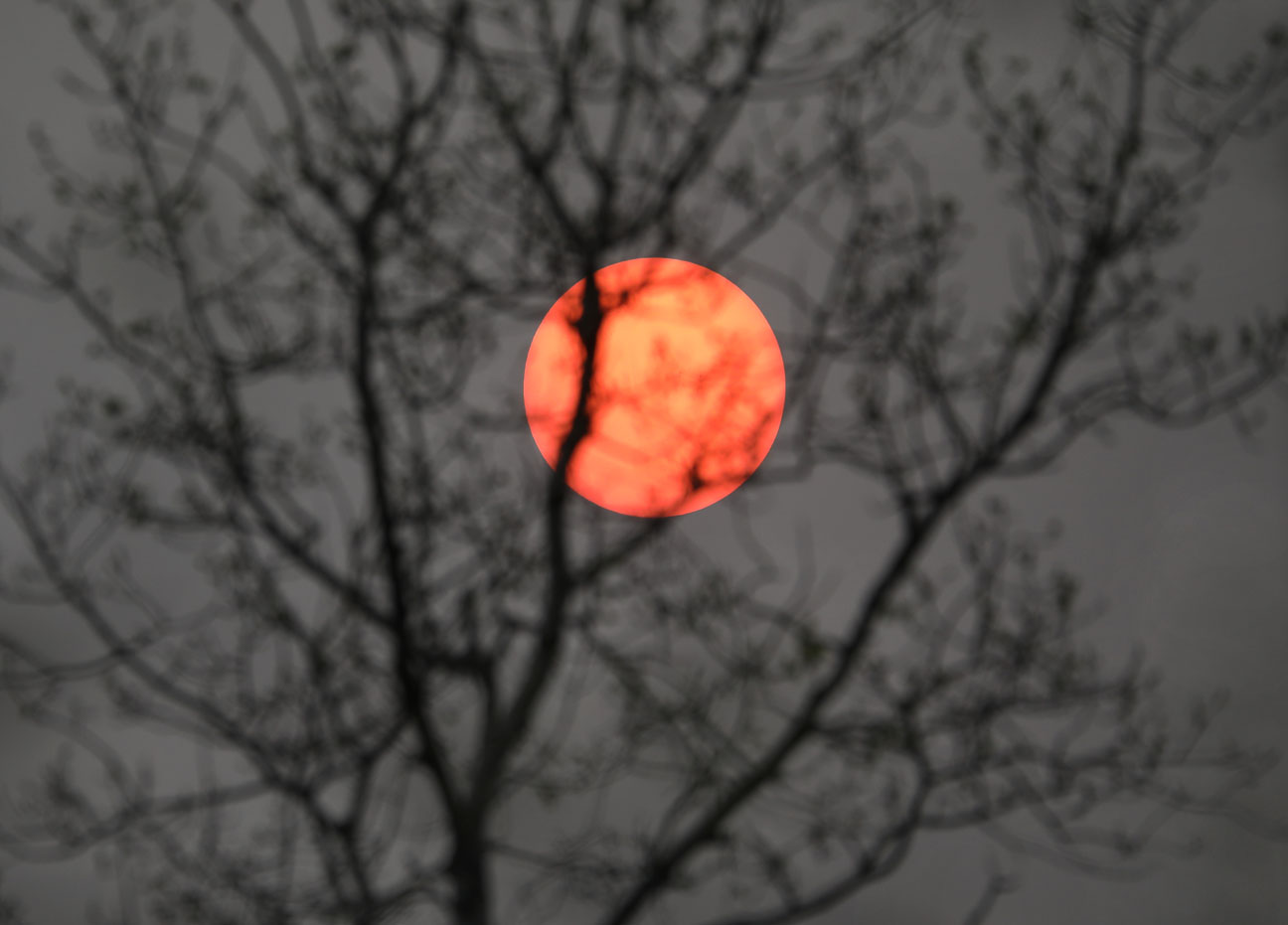
Bob King
Remember when a forecast for "clear skies tonight" meant you'd have a reasonable chance of seeing the stars and Milky Way? For many of us, that prediction is no longer a guarantee. Multiple nights this spring not a single cloud defiled the sky in northern Minnesota but my telescope sat idle. Wildfire smoke pouring south from Canada effectively erased the stars. Some nights were better than others, but all were compromised. It occurred to me that this is how much of the world sees the sky — bereft of stars — due to rapidly rising levels of light pollution. Ironically, the smoke helped me appreciate what urban skywatchers routinely endure.
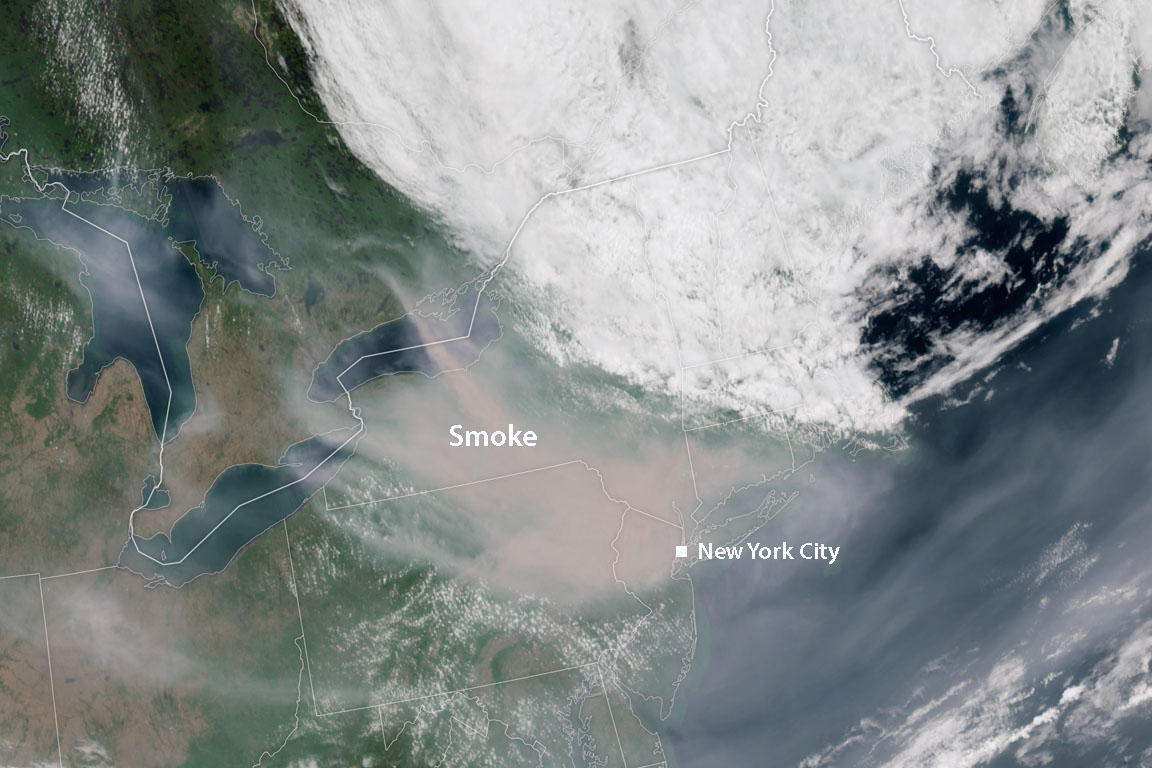
NOAA / NESDIS
It wasn't always like this. Prior to about the year 2000, forest fire smoke was an infrequent visitor to the region. Now they occur over roughly a third of the summer. The New York Times reported on June 10th that 2,300 forest fires raging across Canada had to date burned more than 9 million acres — almost 14 times the normal acreage at this time of year. Scientists attribute the rapid increase in wildfires to climate change. As spring becomes warmer and drier in the far north, fires become more frequent and severe. Smoke now routinely crosses continents as regularly as we cross streets.
A Sorry Sky Calls for Daytime Targets
All of this got me wondering about how to make the best use of the sky at hand. The Sun remains a good target, although the smoky haze can delay its appearance by an hour or more after sunrise and quench its light well before sunset. Contrary to popular belief, forest fires don't necessarily produce spectacular sunsets. While the Sun may shine a spectacular cherry red, smoke scatters and absorbs so much light that the sky glows a dull pinkish-gray with strongly diluted cloud colors.
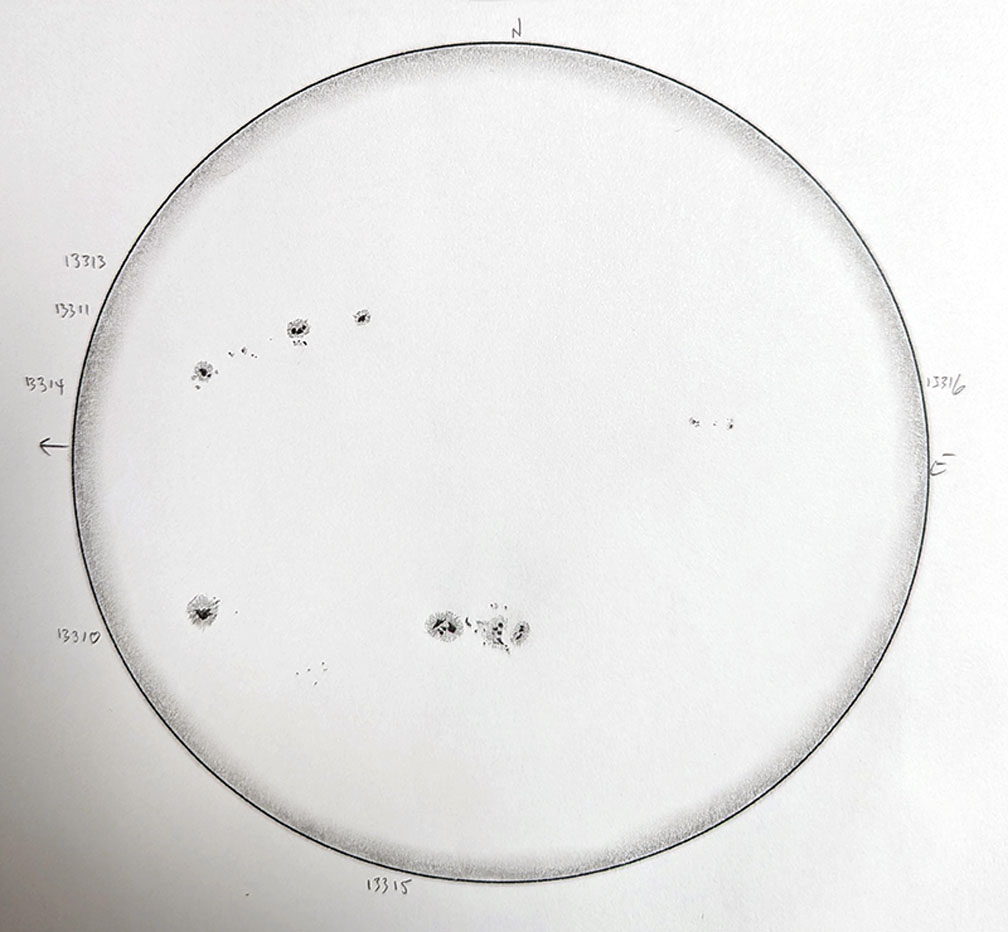
Alan Strauss
In part due to wildfire smoke, I've increased the amount of solar observing I do. Happily, the past couple of years have coincided with a rapid rise in solar activity. Every day, new sunspot groups replace those that rotate out of view at the sun's western limb. Their formation, evolution, and dissolution are fascinating to watch, sketch, and photograph. Large spots (or groups) have been a regular occurrence in the past year and easily studied despite the pall. Some are large enough to see with the naked eye, which I confirm with a #14 welders glass.
Smoke also makes for colorful views of the lunar disk although you'll have to be patient for it to rise high enough to see it through the sooty particulates. On the night of June 13th, after a particularly smoky day, I watched Venus shine the color of a candle flame as it sank in the west. That may be one of the smoke's few positive aspects — tempering the planet's notorious glare. Venus is currently a very thick crescent (43% illuminated) and 27″ in diameter. A magnification of 25× gives a wonderful view.
Smoke-busting Double Delights
Deep-sky objects suffer the most from the smoke screen and are not worth overworking your eyes. Better to wait. Turn your attention instead to the champions of horrible skies — double stars and variable stars. Poor nights give us an excuse to revisit bright objects we may have lost track of in our zeal to go deeper. I had a blast on a recent evening reobserving old favorites like Porrima, Cor Caroli, and Acrab, along with some lesser-knowns I hadn't seen in a year or more. The list below describes 10 pairs bright enough to enjoy on compromised nights:
| Star | R.A. | Dec | Mag. primary | Mag. secondary | Separation | P.A. | Comments |
| Gamma (γ) Vir | 12h 41.7m | –1° 27.0′ | 3.5 | 3.5 | 3.1″ | 356° | Porrima. Used 150x for a good split |
| Alpha (α) CVn | 12h 56.0m | +38° 19.1′ | 2.9 | 5.5 | 19.3″ | 230° | Cor Caroli |
| Pi (π) Boo | 14h 40.7m | +16° 25.1′ | 4.9 | 5.8 | 5.4″ | 114° | Exquisite! |
| Delta (δ) Ser | 15h 34.8m | +10° 32.3′ | 4.2 | 5.2 | 4.0″ | 172° | Bright, tight at low magnification |
| Beta (β) Sco | 16h 05.4m | –19° 48.3′ | 2.6 | 4.5 | 13.4″ | 20° | Acrab — rivals Albireo |
| Alpha (α) Her | 17h 14.7m | +14° 23.4′ | 3.5 | 5.4 | 4.6″ | 103° | Distinctly red supergiant primary |
| Nu (ν) Dra | 17h 32.3m | +55° 10.4′ | 4.9 | 4.9 | 62.1″ | 311° | One of the best binocular pairs |
| Beta (β) Cyg | 19h 30.7m | +27° 57.6′ | 3.2 | 4.7 | 34.9″ | 54° | Albireo — ultimate showpiece |
| Gamma (γ) Del | 20h 46.7m | +16° 07.5′ | 4.4 | 5.0 | 8.9″ | 265° | Colorful yellow-orange, lemon pair |
| Xi (ξ) Cep | 22h 03.8m | +64° 37.8′ | 4.5 | 6.4 | 8.1″ | 274° | Easy split; yellow and purple hues |
Variable stars are practically invincible to bad weather. Smoke and clouds may dim or obscure them, but they will reveal themselves to the patient observer. Since supernovae are a type of variable, I'm delighted to report that SN 2023ixf in the galaxy M101 is still bright enough to see in a 6-inch or 8-inch telescope. Although the star is slowly fading I estimated its brightness at magnitude 11.5 on June 13.2 UT. While smoke may obscure the host galaxy, the supernova still blazes.
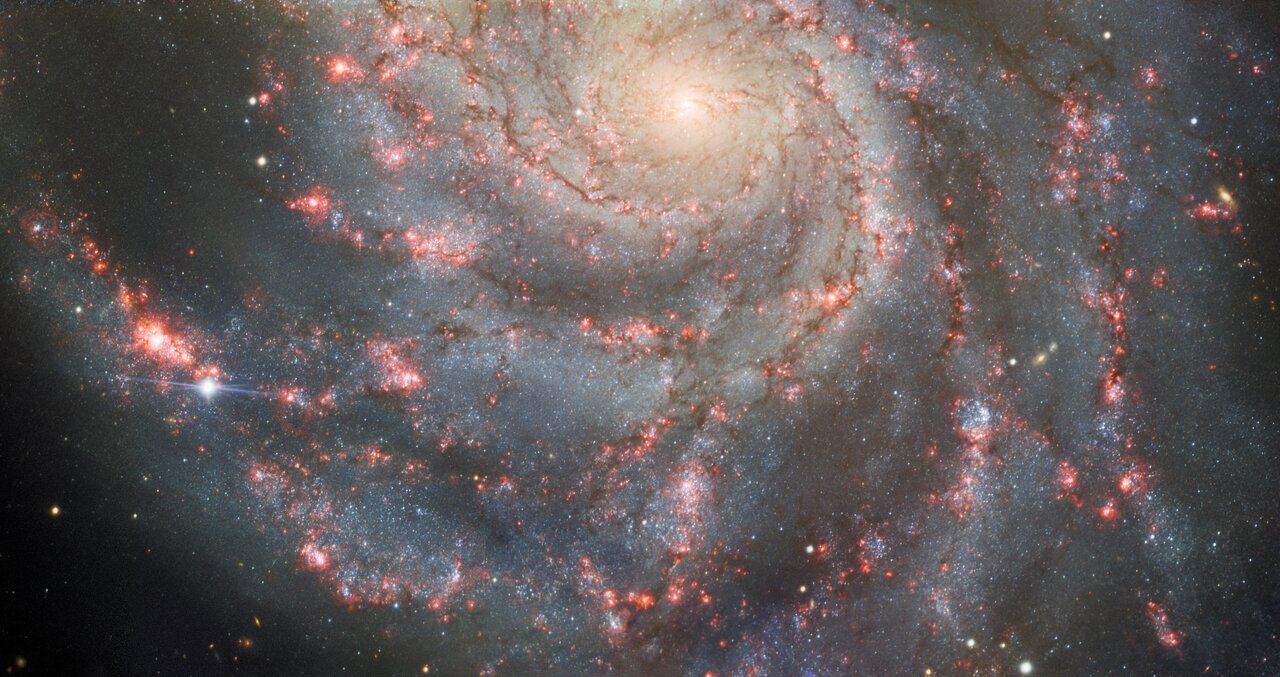
International Gemini Observatory/NOIRLab/NSF/AURA Image Processing: J. Miller (Gemini Observatory/NSF’s NOIRLab), M. Rodriguez (Gemini Observatory/NSF’s NOIRLab), M. Zamani (NSF’s NOIRLab), T.A. Rector (University of Alaska Anchorage/NSF’s NOIRLab) & D. de Martin (NSF’s NOIRLab)
It also happens that R Coronae Borealis (R CrB), famous for dimming unpredictably after years of stasis, recently took a dive. Since early May 2020, it had fluctuated between about magnitude 6.0 and 6.5. Then on May 24th this year, it fell off a cliff. In just three weeks, the star plummeted to magnitude 9.1 (June 13th) and continues to fade. No one knows how deep its plunge will be this time — in February 2016 it nosedived to magnitude 14.3! But there are no guarantees for a repeat. The star may just as suddenly turn around and re-brighten. Not knowing what to expect makes this an exciting time to follow it in a small telescope.
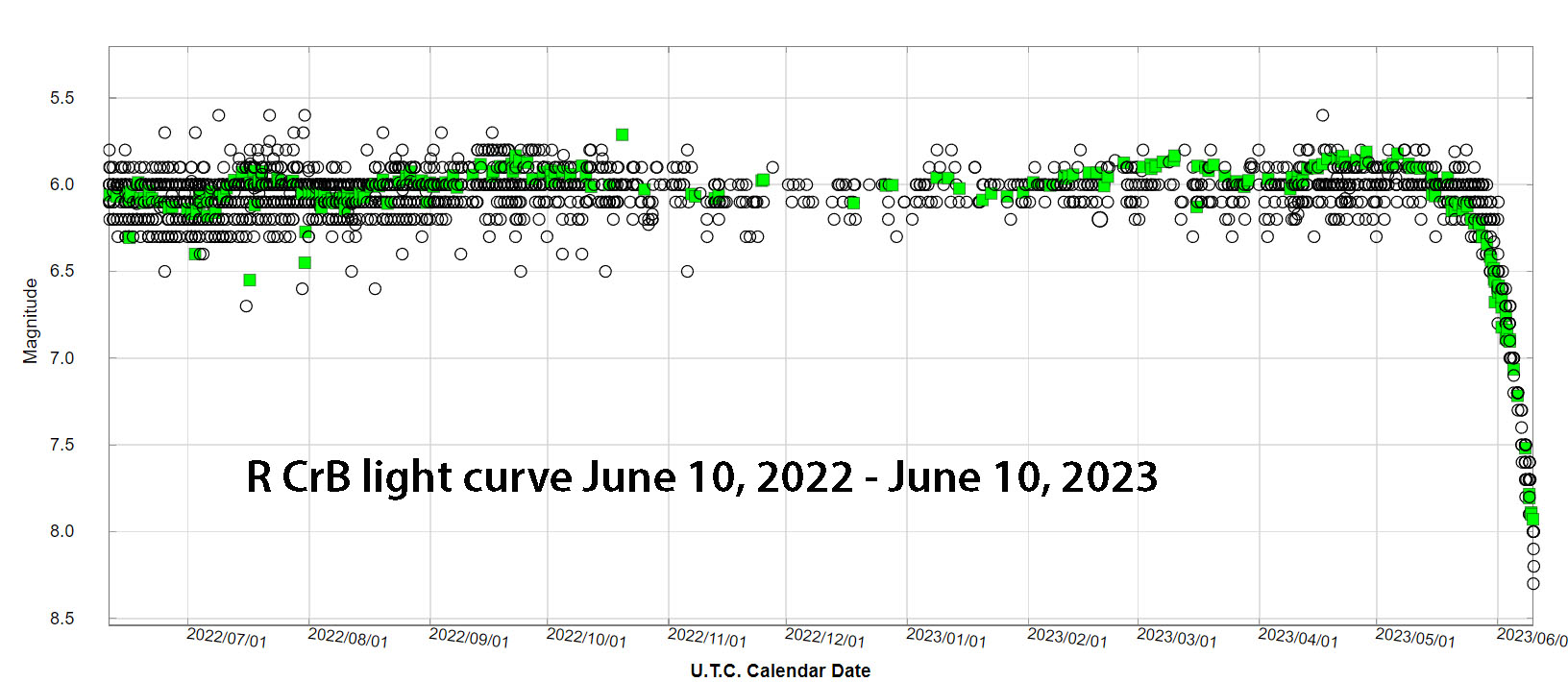
Courtesy of the AAVSO
A massive yellow supergiant, R CrB expels powerful winds of helium and carbon atoms into space at 100,000 times the rate of the solar wind. Some of the carbon condenses into discrete clouds of stellar soot. If one drifts into our line of sight, it blocks the star's light and we see it dim. Only after the cloud has expanded and thinned (or is swept away by R CrB's wind) does the star return to normal brightness.
For That Perfect Night
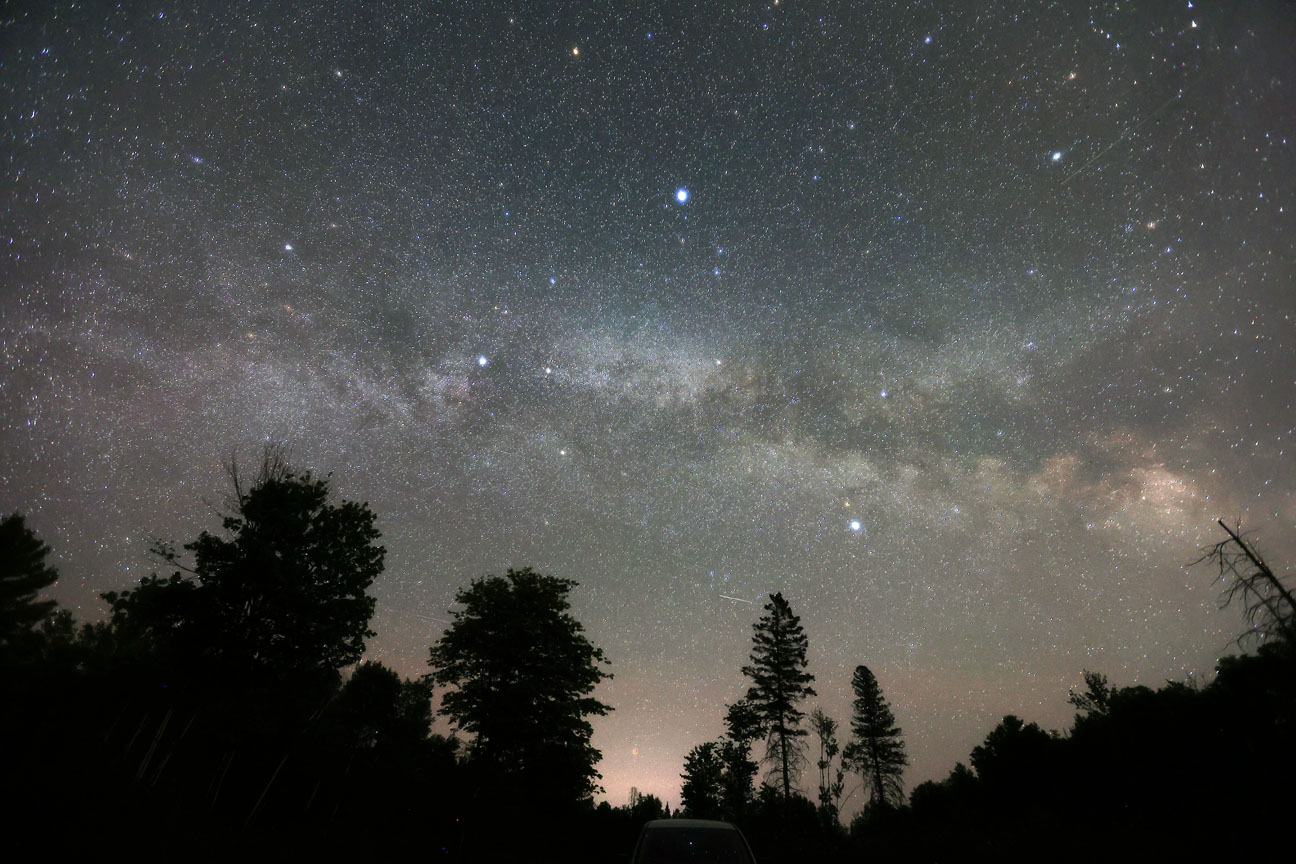
Bob King
On those rare, better nights when the smoke temporarily departs, you can enjoy views of the early summer Milky Way, now rising in the eastern sky at the end of twilight. What a joy it was to see that fogbow of starlight again on June 8th from near my home. For a single night, the smoke parted and stars returned. Despite the late hour, I set up my scope and swept the Milky Way from Cygnus to Sagittarius, happy as a kid without a care.
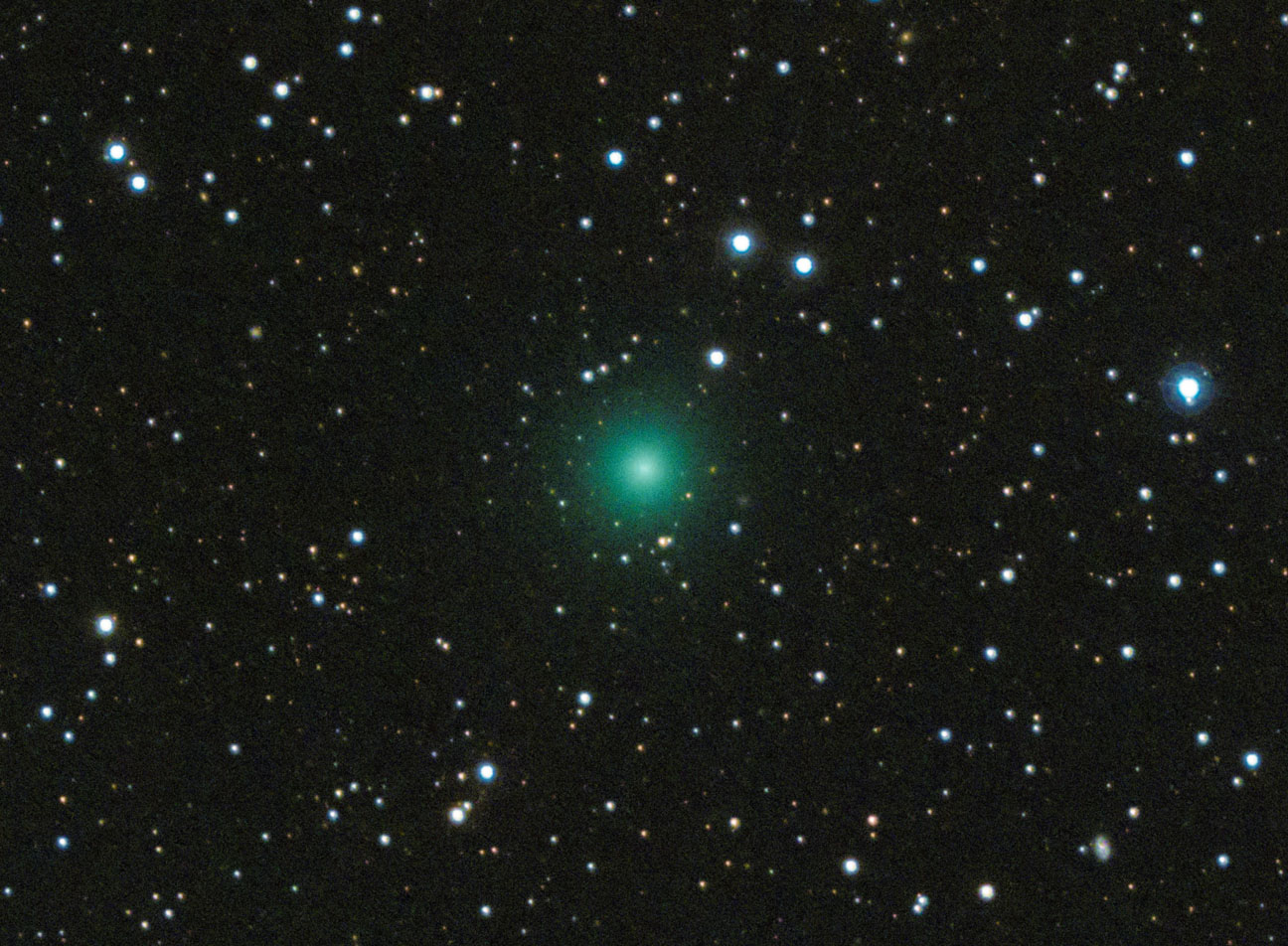
Eliot Herman
One additional target to consider on that special night is Comet ATLAS (C/2023 E1). Discovered on March 1st, the modest fuzzball became visible to amateurs in early May, when it glowed weakly around magnitude 13. Since then it has brightened to magnitude 10.5 and displays a soft, slightly compact coma about 3′-5′ across. It will reach peak brightness early next month at around magnitude 10. For Northern Hemisphere skywatchers, it's the only "bright" comet visible during the early summer.
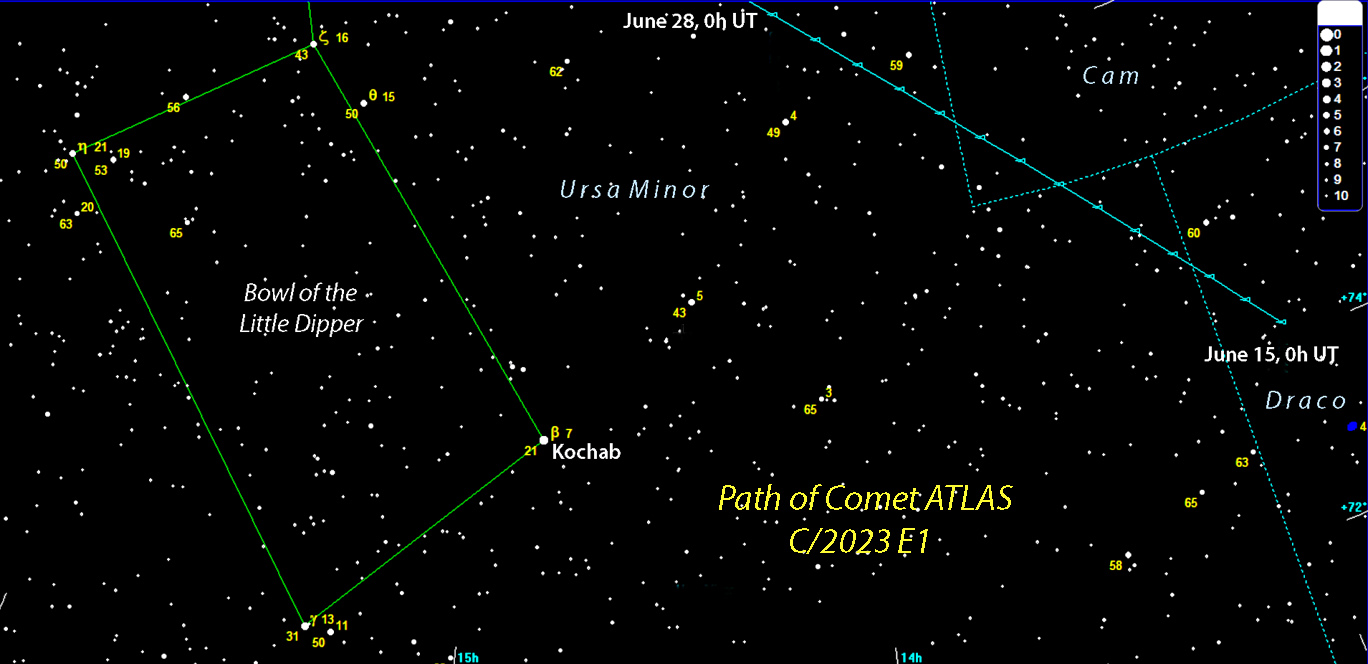
Courtesy of Emil Bonanno (MegaStar)
We find inspiration and beauty in tiny particles when they generate comet tails or are molded by gravity into stars and planets But when they burn our eyes and mask the skies we have no other choice but to adapt — a skill we've honed after years of looking up waiting for the sky to clear.
 5
5









Comments
lwbehney
June 15, 2023 at 2:57 pm
Thank you for that great list of smoke-defeating double and variable stars.
One question please: Do carbon stars look an even deeper red in these conditions?
Clear Skies,
Larry
You must be logged in to post a comment.
Bob KingPost Author
June 16, 2023 at 1:13 pm
Hi Larry,
You're welcome — thanks! It's a great question. Since they're already red I suspect they're would be some effect on their colors but it would be modest. However, red stars looker redder (at least to my eye) when they're fainter rather than brighter. Since smoke absorbs lights and dims stars, carbon stars would likely look a little redder because they would also appear dimmer. The reddening effect was very obvious on Venus the other night. When it was about 10 degrees altitude it glowed very orange.
You must be logged in to post a comment.
OwlEye
June 18, 2023 at 2:26 pm
Hi Bob,
A timely - if unfortunately necessary - article. We have been strangled by Canadian smoke for quite some time, but had a brief break in this appalling sky-soot and a very narrow window of clear sky yesterday evening.
I have been waiting for weeks to see if I could pull C/2023 E1 (ATLAS) from our Bortle 6.5 skies, and was just able to see it at ~ 10:35 pm, CDT, using our 12.5-inch f/10 Newtonian at 79 X. Had it not been very close to two, eleventh magnitude stars, I doubt I would have found it at all. It appeared to be ~ 11th mag and about 1.3 arcmin in diameter. Minutes later, high clouds rushing in from the west obliterated it!
Following the rapid drop of R Coronae Borealis that started for me on May 30th, I had later that day rotator cuff surgery on my left shoulder, and have not dared climb the ladder of the 12.5-inch until last night. It was great to see another new comet!!
You must be logged in to post a comment.
Bob KingPost Author
June 19, 2023 at 2:00 pm
OwlEye,
Glad to hear you're back in the game and saw the comet. Just a quick update. R CrB dropped to mag. 10.2 (my observation) on June 17-18 and appeared the same magnitude last night (June 18-19). A possible pause?
You must be logged in to post a comment.
OwlEye
June 19, 2023 at 10:32 pm
Bob,
Yes, thank you! I had another look at the comet last night, in much cleaner, darker skies, and the coma revealed itself to be ~ 6 arcmin - more than four times the diameter I could see on the 17th, making it at least a half magnitude brighter as well (~10.5).
I had an estimate of R CrB close to yours last night as well: 10.1. I remember back in 2016, R had been climbing from a low minima when I started observing it at mag 11.9. Then, about Sep. 17th of 2019, it started dropping fast and bottomed in the mid to low 8's a little over a month later, then went back up to where it was for the past 3.5 years, and now it's down in the 10's since the end of May!! Going out shortly to see what it's up to tonight. VERY exciting star, indeed!
You must be logged in to post a comment.
You must be logged in to post a comment.